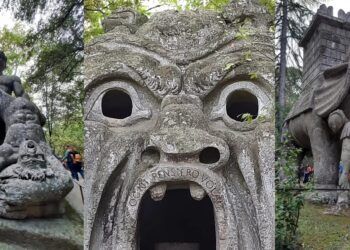The Via Francigena della Tuscia is a section of the historic Via Francigena that crosses the Lazio region of Italy. This road is an ancient pilgrimage route linking Canterbury, England, to Rome. The part of the Via Francigena that crosses Tuscia is particularly fascinating and offers a mix of natural landscapes, historical and cultural heritage.
Via Francigena in Tuscia is the way of the Franks and pilgrims heading to Rome and the Holy Land, from which a pre-existing road axis takes its name on which armies, merchants, travellers, popes and anti-popes passed.
Tuscia is a region located north of Rome, in the northern area of Lazio. The Via Francigena della Tuscia passes through picturesque towns and villages, rolling countryside and a variety of historical and religious sites. Some of the most significant stops along this route include Proceno, Acquapendente, Bolsena, Montefiascone, Viterbo, Lago di Vico, Ronciglione, Vetralla, Capranica, Sutri and Monterosi.
Viterbo is one of the main cities crossed by the Via Francigena della Tuscia and is famous for its well-preserved medieval historic centre. Here you can visit the magnificent Cathedral of San Lorenzo and the Palazzo dei Papi, which was the residence of the popes in the 13th century.
What paths can you follow?
From Viterbo it is possible to follow three independent routes:
- The classic that follows the route downstream to Vetralla, Capranica, Sutri, Monterosi.
- From Viterbo which climbs the Cimini mountain to the old post station, descends into the valley of Lake Vico and heads towards Ronciglione.
- The route that climbs from Viterbo towards the mountain passing through the small village of San Martino al Cimino. From here it is possible to make choices: if you are on foot, go past San Martino al Cimino towards the mountain and at the crossroads with the provincial road 39, you can take the path that descends into the woods inside the valley of Lake Vico.
Sutri is another interesting stop along the way. It is an ancient village that boasts an important archaeological heritage, including a Roman amphitheater carved into the rock and an Etruscan necropolis.
In summary, the complete itinerary of the Via Francigena della Tuscia can take several days or weeks, depending on your speed and your goals. Along the way, you will have the opportunity to immerse yourself in nature, explore the medieval villages, admire the artistic beauties and taste the traditional cuisine of the region.
It is important to keep in mind that if you wish to embark on the Via Francigena route, it is advisable to plan ahead, making sure you have adequate equipment, accommodation along the way and information on the stops and services available along the way.
The Via Francigena della Tuscia is a unique experience that allows you, however, to follow in the footsteps of medieval pilgrims along a route rich in history and natural beauty.










Discussion about this post